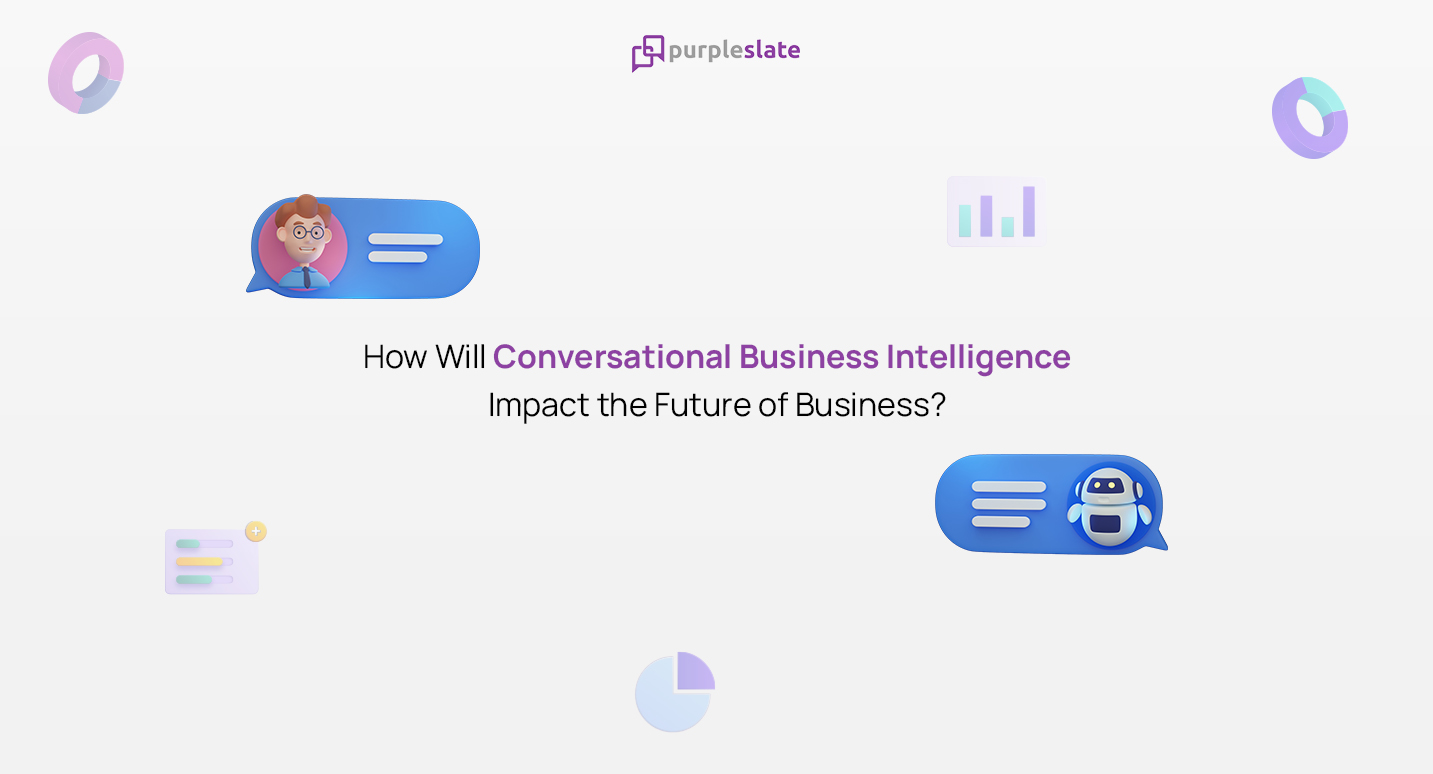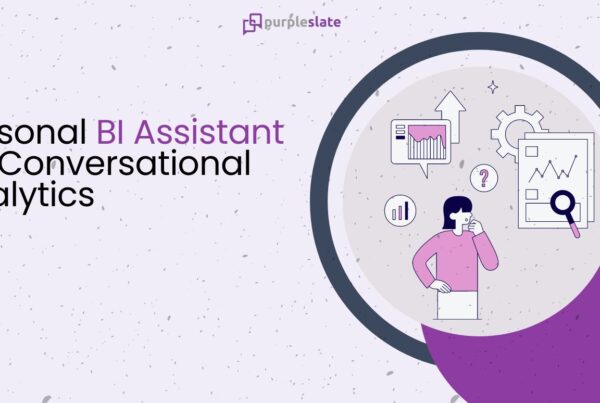
Introduction
Staying ahead of the competition in today’s fast-paced business world necessitates not just making wise decisions but also having the capacity to swiftly identify and meet client wants. Presenting conversational business intelligence, an emerging field that has the potential to completely transform how companies gather, examine, and apply data to drive growth.
By leveraging artificial intelligence and natural language processing, conversational business intelligence like Kea enables businesses to gain actionable insights from their vast data sets simply by engaging in conversation. This means that instead of spending hours sifting through complex reports and spreadsheets, decision-makers can now interact with a conversational AI assistant to get instant answers to their questions and make data-driven decisions on the fly.
But how exactly will this technology impact the future of business? From improved customer experiences to faster problem-solving capabilities, conversational business intelligence has the potential to reshape industries across the board. Companies will be able to uncover hidden patterns, predict future trends, and personalize interactions, leading to better customer engagement and ultimately, increased revenue.
As businesses continue to embrace the power of conversational business intelligence, the forward-thinking companies that invest in this technology today will have a clear advantage in the future marketplace. Stay tuned as we dive deeper into this game-changing field and explore its potential impact on various industries.
The Importance of Business Intelligence in Decision-Making
Effective decision-making is the cornerstone of success in business. Every day, leaders are faced with a multitude of choices that can make or break their organizations. That’s why business intelligence (BI) has become an essential tool for decision-makers. BI involves the collection, analysis, and interpretation of data to support strategic decision-making.
Traditionally, BI has relied on complex reports and spreadsheets, which can be time-consuming and challenging to navigate. However, with the advent of Conversational BI, decision-makers can now access critical insights through simple conversations. This shift not only saves time but also makes data-driven decision-making more accessible to a wider range of users within an organization.
The Evolution of Business Intelligence: From Traditional to Conversational
The field of business intelligence has come a long way since its inception. Initially, BI systems were primarily used to generate reports and provide historical insights. These systems required technical expertise and were limited in their ability to handle unstructured data. However, with advancements in technology, the landscape of BI has evolved significantly.
Conversational business intelligence represents the next phase in this evolution. By combining AI and natural language processing (NLP), conversational BI platforms like Kea can understand and respond to human language, making it easier for users to interact with data. This shift from a traditional, report-centric approach to a conversational one opens up new possibilities for businesses to explore their data in a more intuitive and efficient manner.
Benefits of Conversational Business Intelligence
Conversational business intelligence offers a host of benefits that can transform the way organizations operate and make decisions. Firstly, it simplifies the process of accessing and analyzing data. Instead of relying on technical skills or having to navigate complex software, users can now ask questions in plain language and receive immediate insights.
Additionally, conversational BI enables faster problem-solving capabilities. Instead of waiting for reports to be generated, decision-makers can engage in real-time conversations with AI assistants to get the answers they need in an instant. This agility allows businesses to respond to changing market conditions more quickly and make informed decisions on the fly.
Another advantage of conversational business intelligence is its ability to uncover hidden patterns and trends. By analyzing large volumes of data, AI-powered systems can identify correlations and make predictions that humans might miss. This enables organizations to gain a competitive edge by anticipating customer needs, optimizing processes, and identifying new opportunities.
Challenges and Limitations of Conversational Business Intelligence
While conversational business intelligence holds tremendous potential, it is not without its challenges and limitations. One significant challenge is ensuring the accuracy and reliability of the insights generated by AI systems. Although conversational AI assistants are continuously improving, they may still struggle with complex queries or ambiguous language, leading to inaccurate responses.
Another limitation is the need for high-quality data. Conversational BI relies on vast amounts of data to generate meaningful insights. However, if the underlying data is incomplete, inconsistent, or biased, the accuracy of the insights will be compromised. Therefore, organizations must prioritize data quality and invest in data management processes to maximize the effectiveness of conversational business intelligence.
Integrating Conversational Business Intelligence into Your Organization
To successfully integrate conversational business intelligence into an organization, several factors need to be considered. Firstly, it is essential to define clear goals and identify the specific areas where conversational BI can add value. This involves understanding the pain points, challenges, and opportunities within the organization that can be addressed through conversational analysis.
Secondly, organizations must invest in the right tools and technologies. Conversational BI platforms vary in their capabilities, so it is crucial to select a solution that aligns with the organization’s needs and technical requirements. Additionally, organizations may need to provide training and support to ensure that employees can effectively use and leverage the conversational BI tools.
Future Trends and Predictions for Conversational Business Intelligence
As conversational business intelligence continues to evolve, several trends and predictions are emerging for its future. Firstly, we can expect to see improved natural language understanding capabilities in AI systems. This will enable more nuanced conversations and a deeper understanding of user queries, leading to more accurate and relevant insights.
Secondly, conversational BI will likely become more integrated with other technologies, such as machine learning and predictive analytics. This integration will enable organizations to not only gain insights from historical data but also make predictions and recommendations based on real-time information, further enhancing decision-making capabilities.
Lastly, the widespread adoption of conversational business intelligence is expected to drive a shift towards a more data-driven culture within organizations. As decision-makers become accustomed to accessing data through conversations, they will rely less on gut feelings and more on data-driven insights to guide their strategies, leading to more informed and successful business outcomes.
Tools and Technologies for Implementing Conversational Business Intelligence
Implementing conversational business intelligence requires the use of suitable tools and technologies. One popular solution is the integration of AI-powered chatbots or virtual assistants into existing systems. These assistants can be programmed to understand natural language and interact with users, providing real-time insights and recommendations.
Another crucial technology for conversational BI is natural language processing (NLP). NLP algorithms enable machines to understand and interpret human language, making it possible for users to communicate with AI systems in a conversational manner. NLP plays a vital role in enabling the seamless interaction between users and conversational BI platforms.
Conclusion
Conversational business intelligence represents a paradigm shift in the way businesses interact with data. With tools like Kea leading the way, organizations can leverage the power of natural language understanding to unlock new insights, drive informed decision-making, and stay ahead of the competition. As we look towards the future, embracing conversational intelligence will be essential for businesses looking to thrive in an increasingly data-driven world. So why wait? Start the conversation today and unlock the full potential of your data with Kea.




